I tend to write too much. Overstuffing each sentence with dashes, parenthesis, and asides. I know I do this, but I can't stop. There's just too much to tell. As far as indulgences go, it's pretty tame, but I need to quit.
As a way to do that I’m going to be putting these rabbit hole tidbits into a series that will be as deliberately to-the-point as I can make them. Some you’ve heard before, maybe even from me in an earlier post. Hopefully even the previously known will still be interesting, like a hole on a familiar golf course.
Won’t you join me for a quick 9?
*NOTE: underlined text provides a link to references or sites with more information
1. Definitely, Maybe
Coming into the fall of 1910, Charles “Chick” Evans Jr was one of the hottest young players in the country. Think Tiger Woods except except perhaps somehow...bigger? The Northwestern freshman had recently won the Western Open, becoming the first amateur to win a “professional” tournament. His fellow collegiate players were prepared for a great battle at the (September) 1910 Intercollegiate Golf Championship, but it never happened. Evans was refused entry even as an individual in the championship due to bylaws stating that the player had to be from a university that was already a member of the Intercollegiate Golf Association (IGA), which Northwestern was not (yet).
2. A Walk To Remember
It wasn’t like Evans was told not to show up, he was actually already in the area where the championship was being played (Essex CC) because it was close by to where he had just successfully made a run to the semifinals of the US Amateur championship held at The country Club in Brookline, Massachusetts. Several of the players apparently put in a good word for Evans, including Yale’s Robert E Hunter who had caddied for him in the US Am. In the end it worked out for Robert as he walked away from the intercollegiate championship with the individual title.
3. The Proposal
Understandably upset about being turned away from the “Eastern” intercollegiate championship, Evans rallied the other left out “Western” schools into finally agreeing to form their own Western Intercollegiate Golf Association. By all accounts he was pretty close, but the whole thing fell apart when he was forced to leave school in early 1911 due to a combination of not being able to afford tuition and seeing an opportunity to pursue golf. Funny enough, the WIGA was eventually realized a few years later but was stopped dead by WWI. After the Great War, the WIGA effectively became the Big Ten championship.
4. About Time
Fast forward nearly 30 years and Chick Evans had indeed become one of the best players in golf. By the late 1930s, Evans had completed what some call the American Grand Slam, winning the Western Am, Western Open, US Am, and US Open in his career. To put this in perspective, only Jack Nicklaus and Tiger Woods have also won all of those tournaments in their careers, however Evans is the only player to have won all four while remaining an amateur! In early 1939 he had largely put competitive golf aside and began a new venture as the Chairman of the first ever NCAA golf committee. By a delicious turn of fate, it was now Evans who was in charge of running the college golf championship he had been denied entry into, which was now open to a much larger portion of the country.
5. Father of the Bride
Besides his golf, Evans is now mostly known for an incredible scholarship foundation bearing his name. He endeavored to make it so that caddies would have a much greater opportunity at receiving the education he wasn’t able to complete. This program has since helped thousands of caddies attend one of nearly two dozen schools, but it started with sending a few lucky deserving people to Northwestern. One of those scholarship recipients was Sid Richardson, the 1937 & 1938 Big Ten individual champ and 1939 NCAA medalist. Since the stroke play portion was played before the individual match play, that meant that one of the first awards Chick Evans officially presented as NCAA golf committee chairman was to someone attending school thanks to his scholarship!
6. Save the Last Dance
Chick Evans continued in his role as NCAA golf chairman through the 1942 championship. Although college golf continued to be played through the duration of WWII, Evans left the college scene to do his part for the war effort. His last championship was the 1942 edition held at Notre Dame’s home course. Amazingly, the official medalist, Dick Haskell, was another Evans Scholarship recipient attending Northwestern. Not only that, Evans was able to award another Northwestern player, Manuel de la Torre, the runner-up honors.
7. An Officer and a Gentleman
The player standing atop the leaderboard at the end of the 36-hole individual qualifying portion of the 1942 NCAA championship was not the same man that Chick Evans awarded the medal to. Why? Because LSU’s Earl Stewart chose sportsmanship over medals. A long standing but seldom used rule at the time stipulated that the reigning individual champion didn’t need to qualify and would instead take the honorary place in the #1 position in the match play bracket. This made more sense before the stroke play portion doubled as the team championship, but nevertheless it was still in place in 1942. As the 1941 champion, Stewart announced he was using this option so that medalist honors would instead pass to another deserving player, which is how Northwestern’s Dick Haskell made it into the NCAA record book despite finishing a stroke behind. This undoubtedly meant a great deal to both men who were soon destined for actual war.
8. Made of Honor
The story actually gets even better if you can believe it. Not only did Stewart give up medalist honors, he gave up improving his own record. His 1942 total of 141 beat out his 1941 total by a single stroke. Newspaper accounts of the time indicate officials declared that the new record of 141 would stand, however the NCAA record book does not reflect this and frankly I’m not sure how it could. In any case, Stewart and Haskell shared that record until 1948 when another LSU lad, Gardner Dickinson, and San Jose State’s Morgan Fottrell bettered it by 2 strokes.
9. Pitch Perfect
After the war, both Sid Richardson and Earl Stewart became college golf coaches. Richardson returned to his alma mater to coach Northwestern from 1946-1975, leading Northwestern to a Big Ten title in 1948. Stewart became the SMU men’s and women’s coach in 1975. After the men’s program was dropped due to budgetary constraints in 1980, Stewart remained the women’s coach until 1987. While in that position, he coached two national champions: Kyle (O’Brien) Stevens in 1979 and Amy Benz in 1982. Benz has the distinction of being the last AIAW individual champion before the NCAA took over running the women’s golf championships too.
Richardson joined an exclusive list of players to win conference titles as both a player and coach. Stewart’s accomplishment of winning an individual championship title and coaching an individual champion (well, two) puts him on an even shorter list. Both men share in common the fact they are two of only a handful of NCAA medalist/individual winners to eventually coach college golf.

Thanks for reading!









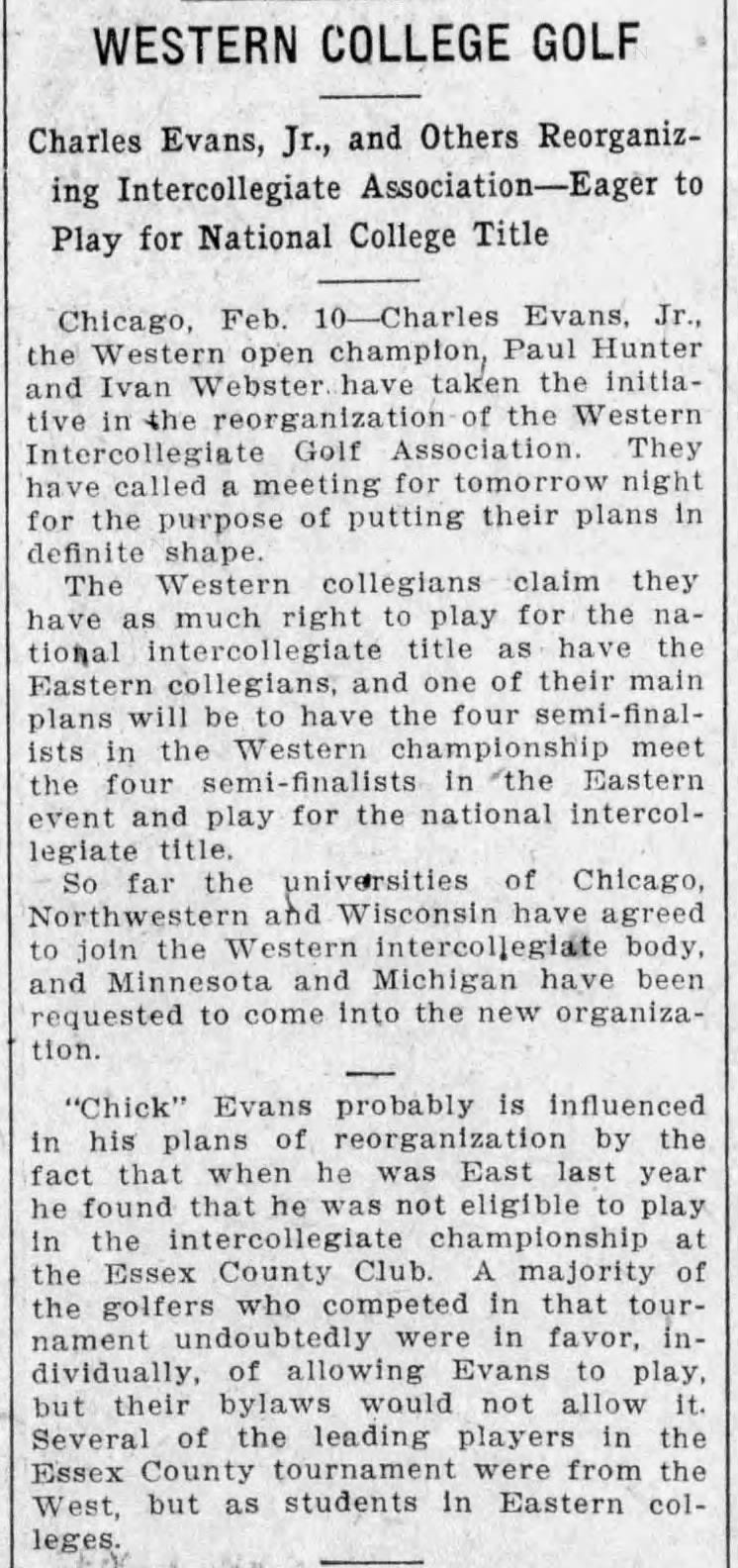

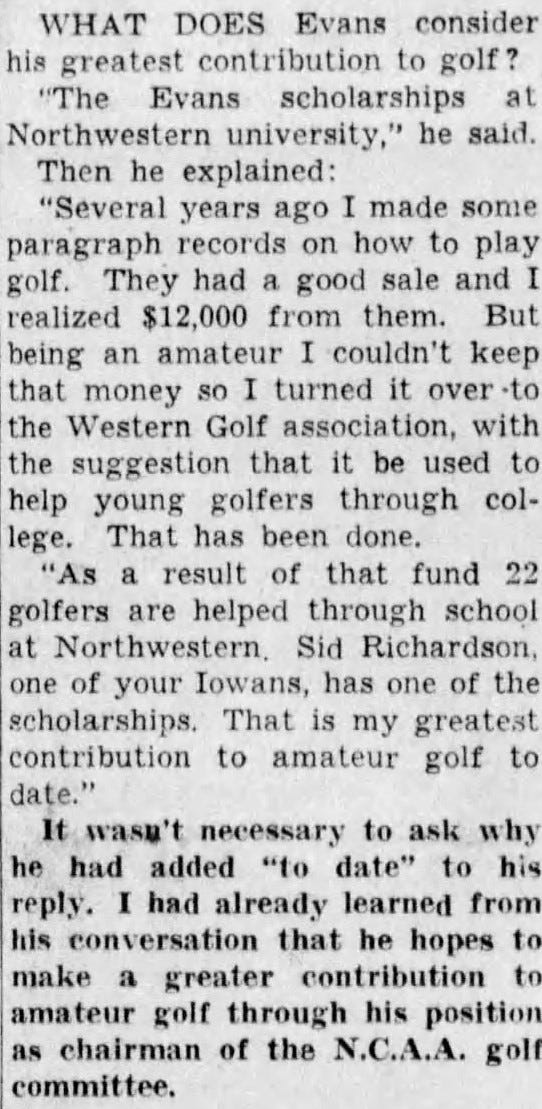
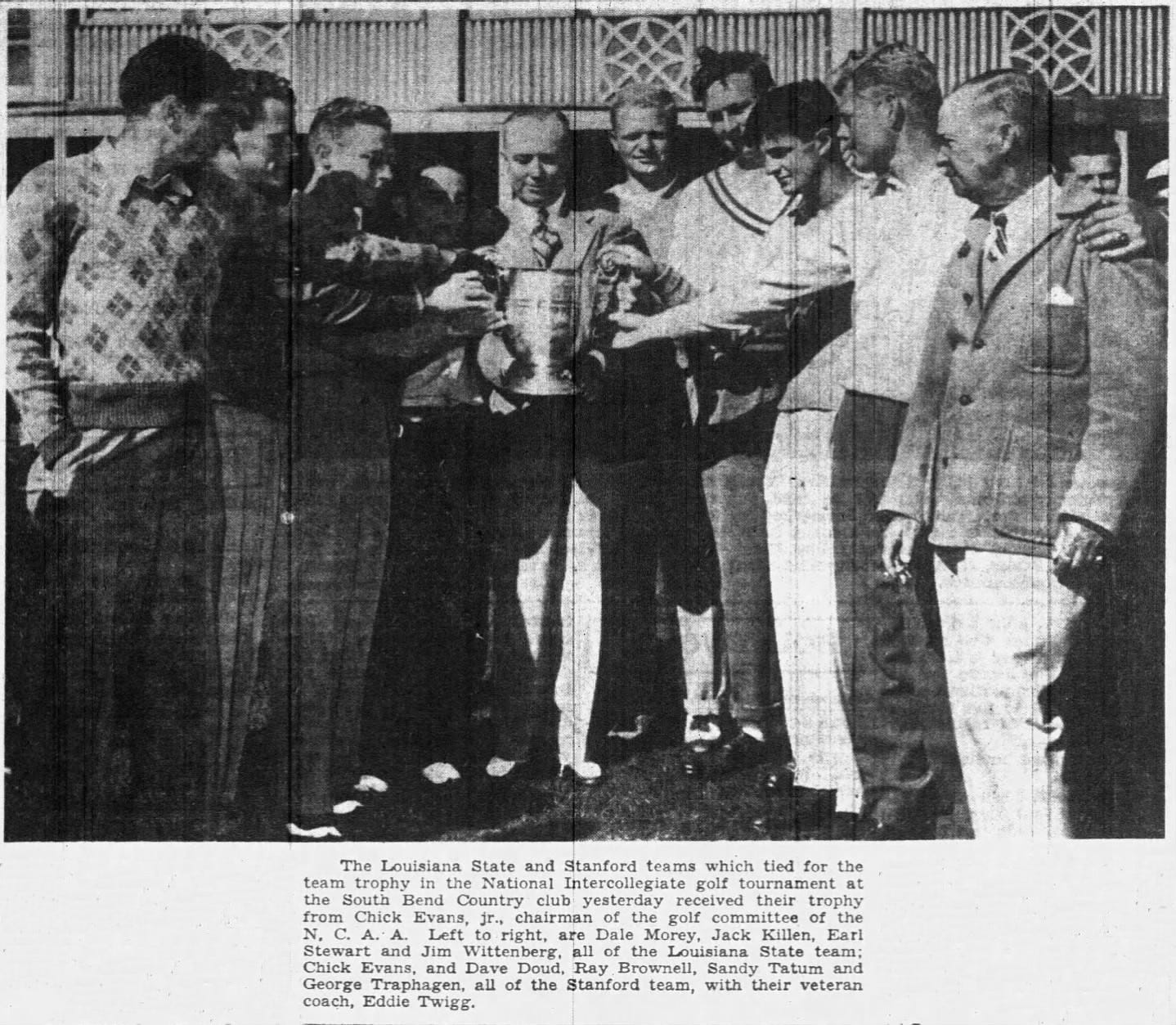
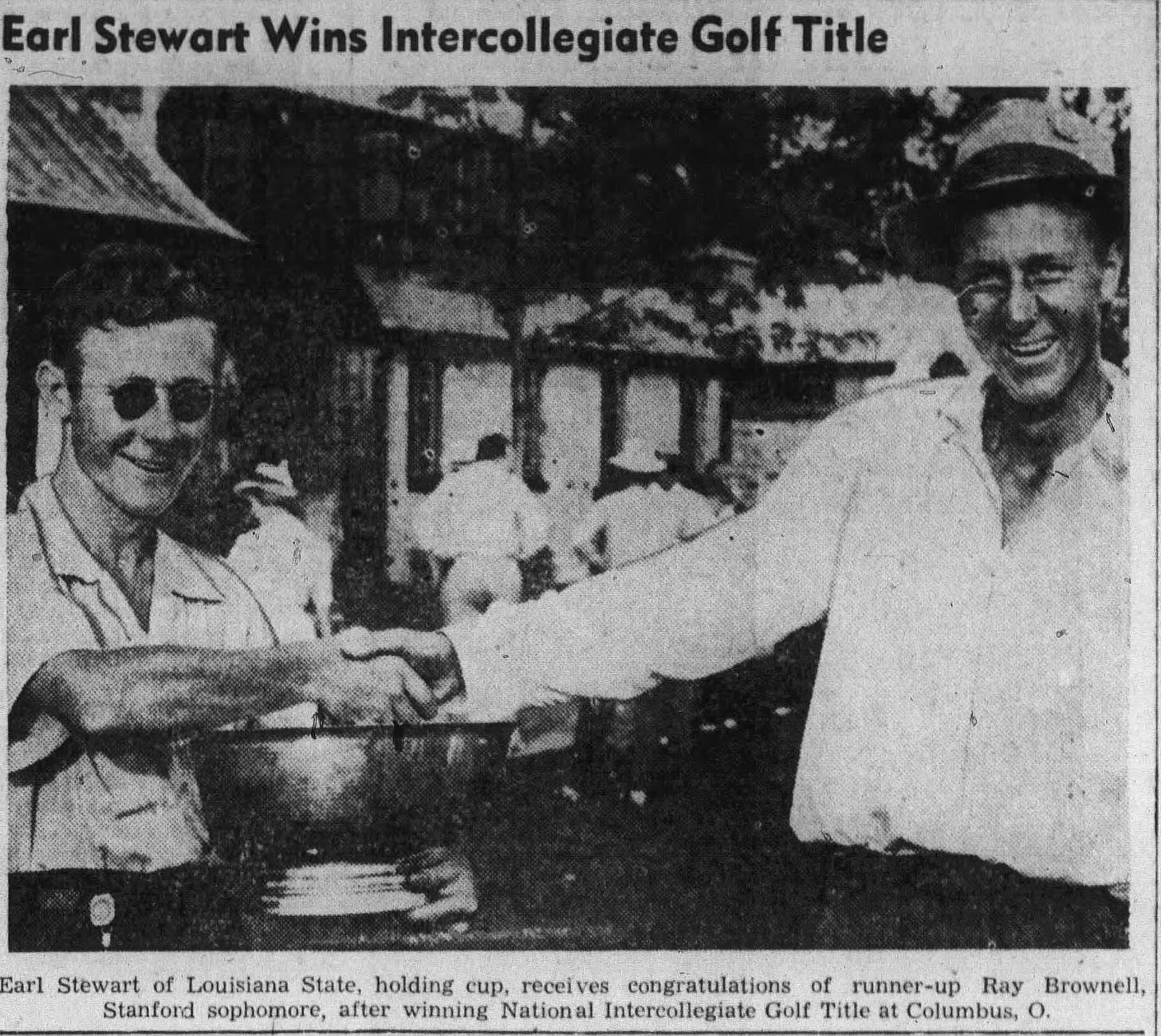
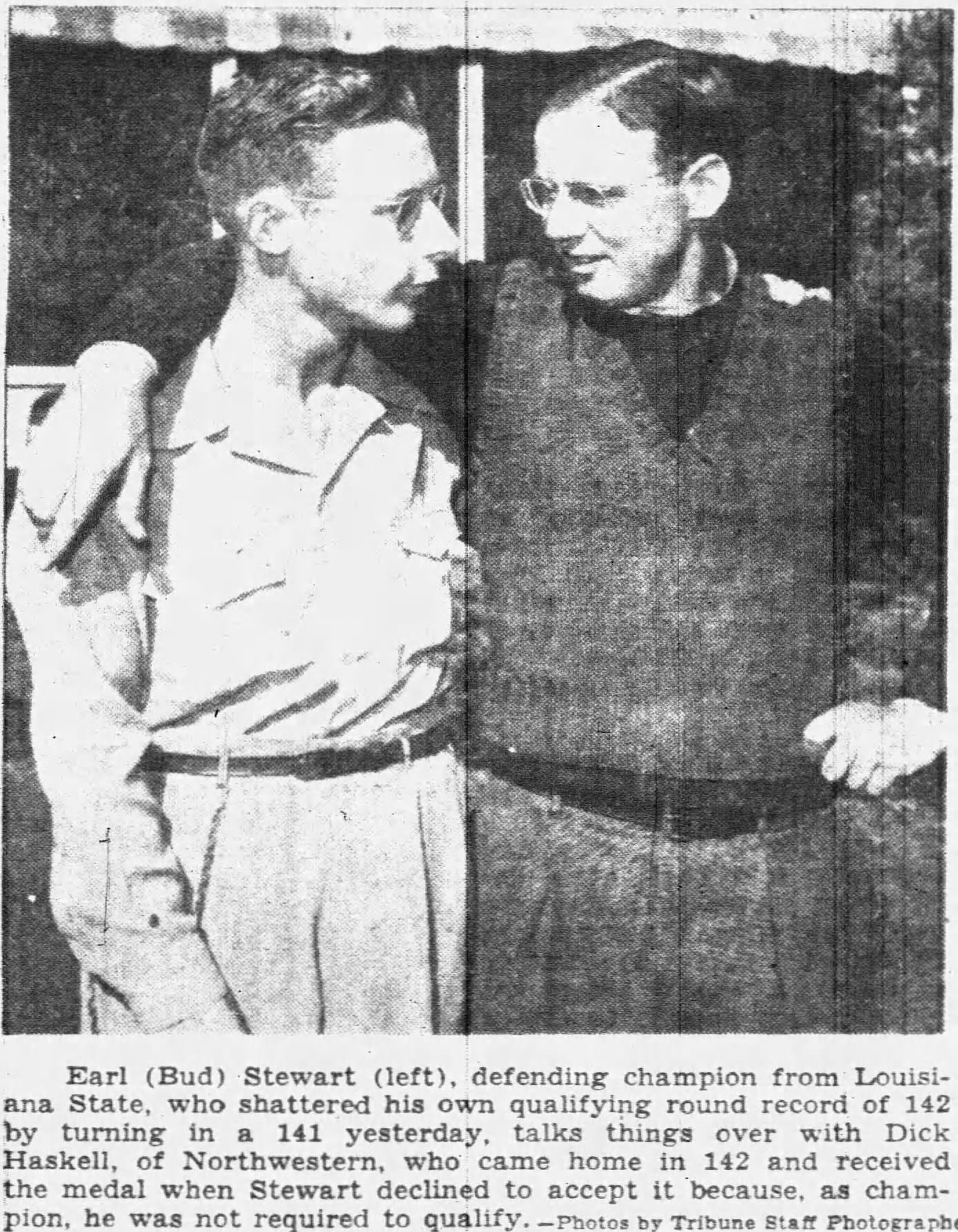

That was a fun ride.